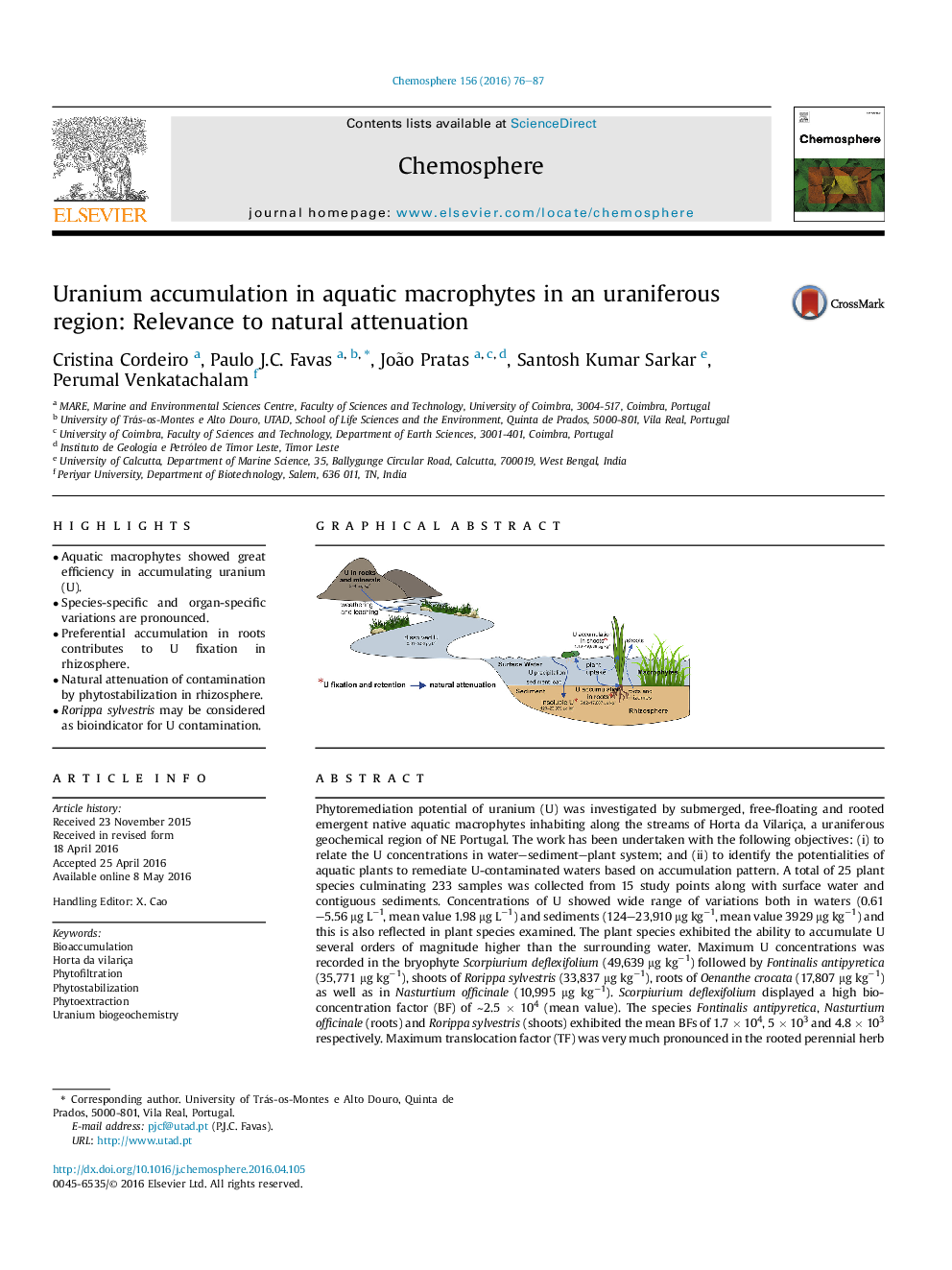| کد مقاله | کد نشریه | سال انتشار | مقاله انگلیسی | نسخه تمام متن |
|---|---|---|---|---|
| 4407697 | 1618815 | 2016 | 12 صفحه PDF | دانلود رایگان |
• Aquatic macrophytes showed great efficiency in accumulating uranium (U).
• Species-specific and organ-specific variations are pronounced.
• Preferential accumulation in roots contributes to U fixation in rhizosphere.
• Natural attenuation of contamination by phytostabilization in rhizosphere.
• Rorippa sylvestris may be considered as bioindicator for U contamination.
Phytoremediation potential of uranium (U) was investigated by submerged, free-floating and rooted emergent native aquatic macrophytes inhabiting along the streams of Horta da Vilariça, a uraniferous geochemical region of NE Portugal. The work has been undertaken with the following objectives: (i) to relate the U concentrations in water–sediment–plant system; and (ii) to identify the potentialities of aquatic plants to remediate U-contaminated waters based on accumulation pattern. A total of 25 plant species culminating 233 samples was collected from 15 study points along with surface water and contiguous sediments. Concentrations of U showed wide range of variations both in waters (0.61–5.56 μg L−1, mean value 1.98 μg L−1) and sediments (124–23,910 μg kg−1, mean value 3929 μg kg−1) and this is also reflected in plant species examined. The plant species exhibited the ability to accumulate U several orders of magnitude higher than the surrounding water. Maximum U concentrations was recorded in the bryophyte Scorpiurium deflexifolium (49,639 μg kg−1) followed by Fontinalis antipyretica (35,771 μg kg−1), shoots of Rorippa sylvestris (33,837 μg kg−1), roots of Oenanthe crocata (17,807 μg kg−1) as well as in Nasturtium officinale (10,995 μg kg−1). Scorpiurium deflexifolium displayed a high bioconcentration factor (BF) of ∼2.5 × 104 (mean value). The species Fontinalis antipyretica, Nasturtium officinale (roots) and Rorippa sylvestris (shoots) exhibited the mean BFs of 1.7 × 104, 5 × 103 and 4.8 × 103 respectively. Maximum translocation factor (TF) was very much pronounced in the rooted perennial herb Rorippa sylvestris showing extreme ability to transport U for the shoots and seems to be promising candidate to be used as bioindicator species.
Figure optionsDownload as PowerPoint slide
Journal: Chemosphere - Volume 156, August 2016, Pages 76–87
